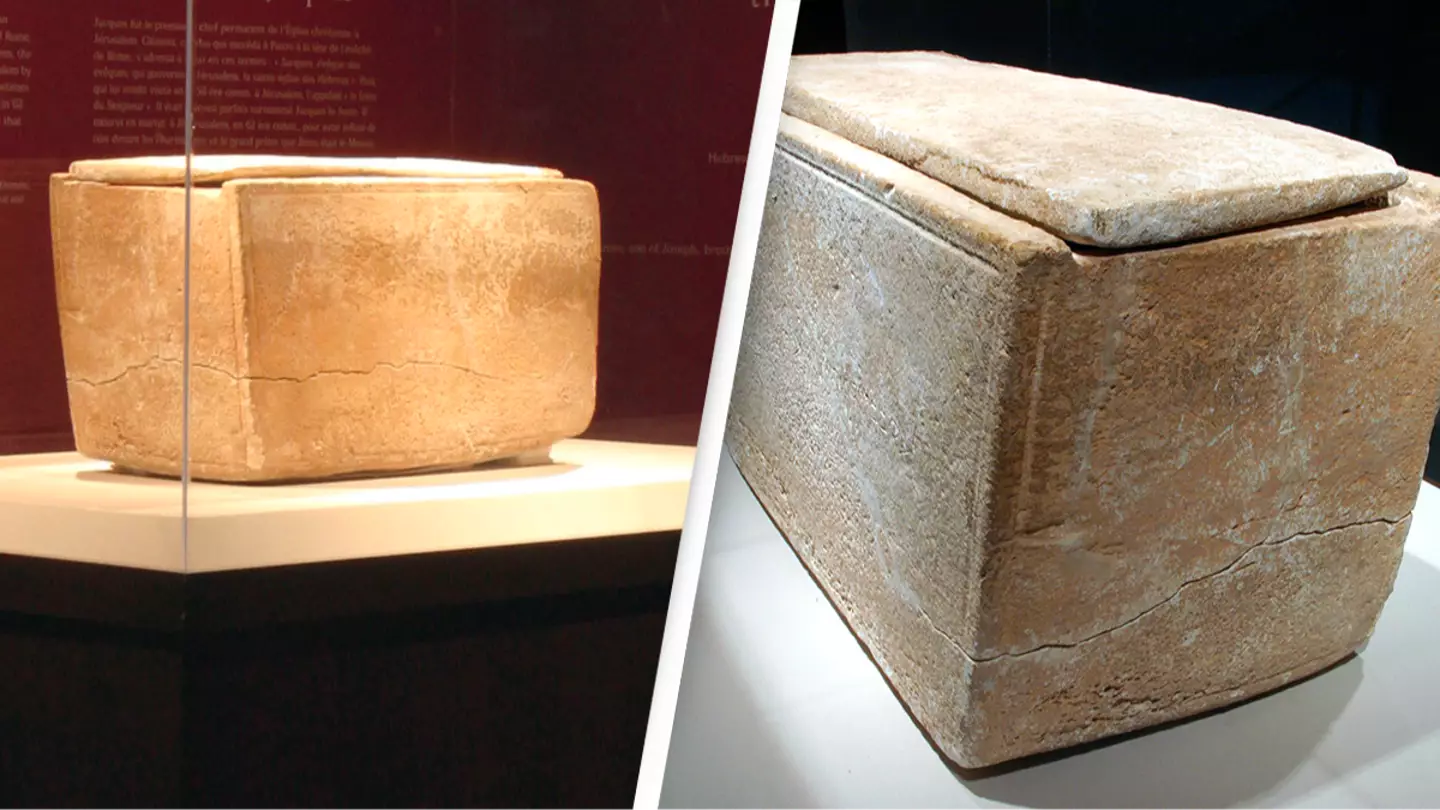In 1976, antiques collector Oded Golan came into the possession of a limestone bone box and a rather exciting inscription on the outside.
The phrase ‘James, son of Joseph, brother of Jesus,’ was inscribed on the outside of the bone box. In the Bible, the names of Jesus’ brothers are mentioned several times, including James, Jude, Simon and Joses.
Nicknamed the James Ossuary, the box subsequently stirred up questions as to whether it once held the bones of one of Jesus Christ’s brothers inside.
After the discovery was made public in 2002, it was slammed by the Israel Antiquities Authority (IAA) which dubbed the inscription as being a forgery, as per Live Science.

There’s been much debate over the authenticity of the inscription (Drew Cunningham/Getty Images)
Doubt over its authenticity
The Israel Antiquities Authority (IAA) appointed a committee of scholars to study the ‘brother of Jesus’ inscription and reported that its findings and it was concluded the inscription was a forgery, Biblical Archaeology says.
However, Dutch scholar Pieter van der Horst accused the IAA of only appointing committee members who had already exhibited skepticism.
After seven years, the trial concluded clearing Golan and anyone else of any forgery.
Although, Bible scholar at the Asbury Theological Seminary Dr Ben Witherington III told The Daily Mail in November this year: “The likelihood of that particular combination of those three names not referring to the famous James the Just, and his father Joseph, and his brother Jesus are slim to none.
“If it were true that the crucifixion was the end of Jesus’ story, no one would be bragging about being related to him on an ossuary.”
Although, new evidence has seemingly suggested the box may hold a genuine connection to Christ.

New analysis has reportedly been performed on the box (Drew Cunningham/Getty Images)
New analysis
Earlier this month, Golan told Crosswalk.com it’s ‘almost sure’ that the ossuary ‘belonged to James, the brother of Jesus’.
Why? Well, he says ‘several chemical tests’ were performed on the box and ‘especially to the inscription itself’ – ‘the more important element’.
And the tests allegedly ‘proved that the whole inscription is authentic’, with Golan adding: “It was engraved several thousand years ago.”
In 2017-2018, experts headed to the northwest suburbs of Frankfurt – the site of the former Ancient Roman town Nida.
There on the outskirts of the German city, they came across a burial ground containing 127 graves, according to Archeology News.
It’s understood the specialists took particular interest in a grave where the remains of a man, thought to be aged 35-40, were laid to rest between A.D 230 and 270.
Alongside an incense burner and pottery, the researchers discovered a piece of wafer-thin, small, rolled silver foil resting below his chin.
This item measures just 1.4 inches (3.5 centimetres) and was likely worn like an amulet.

The 18-line text has been dubbed the Frankfurt Silver Inscription (Leibniz Institute for Archaeology in Mainz (LEIZA))
It has since been classified as a phylactery—an object believed to confer protection upon its owner.
Dr Tine Rassalle, an independent biblical archaeologist who was not involved in the study, told Live Science that the purpose of these amulets ‘was to protect or heal their owners from a range of misfortunes, such as illnesses, bodily aches, infertility, or even demonic forces.
“In an era without advanced medical knowledge, such items were vital sources of comfort and security for you and your loved ones.”
According to the expert, the wearables were often used in Late Antiquity, especially in the eastern Mediterranean world.
This period roughly corresponds to the late third century to around the seventh century depending on location, says the Library of Congress Research Guides.
“[But the amulets] are much rarer in the western Roman world,” she continued.
“The discovery of this amulet in Germany suggests that Christian ideas had already begun to penetrate areas far from Christianity’s early centers of growth.”
By utilizing advanced computer technology at the Leibniz Center for Archaeology (LEIZA) in Mainz, the amulet-like object has been digitally ‘unrolled’.
.jpg)
Detail of the silver inscription (Stadt Frankfurt/YouTube)
Speaking about the arduous process Ivan Calandra, archaeologist at LEIZA, said: “The challenge in the analysis was that the silver sheet was rolled, but after around 1,800 years, it was of course also creased and pressed.
“Using CT, we were able to scan it at a very high resolution and create a 3D model.”
The process revealed 18-lines of text, dubbed the Frankfurt Silver Inscription, which has since been deciphered by Professor Markus Scholz, an archaeologist from Goethe University in Frankfurt.
“I called in experts from the history of theology, among others, and we approached the text together, piece by piece, and finally deciphered it,’ Professor Scholz said, as per the Daily Mail.
He added that the ‘purely Christian’ amulet showed that the man had been ‘devout’ in his faith.
.jpg)
The silver foil reportedly shows how ‘devout’ the man was in his Christian faith (Stadt Frankfurt/YouTube)
Before the Frankfurt Silver Inscription was discovered on the foil, evidence of Christianity between A.D 230 and 270 had not been found north of the Alps.
Therefore, the unnamed man is being called the ‘first Christian north of the Alps’ by experts.
Dr Ina Hartwig, Frankfurt’s head of culture and science, has hailed the find as ‘extraordinary’, musing that the discovery will ‘keep science busy for a long time to come.
“This affects archaeology as well as religious studies, philology and anthropology,” she added.
“Such a significant find here in Frankfurt is really something extraordinary.”
